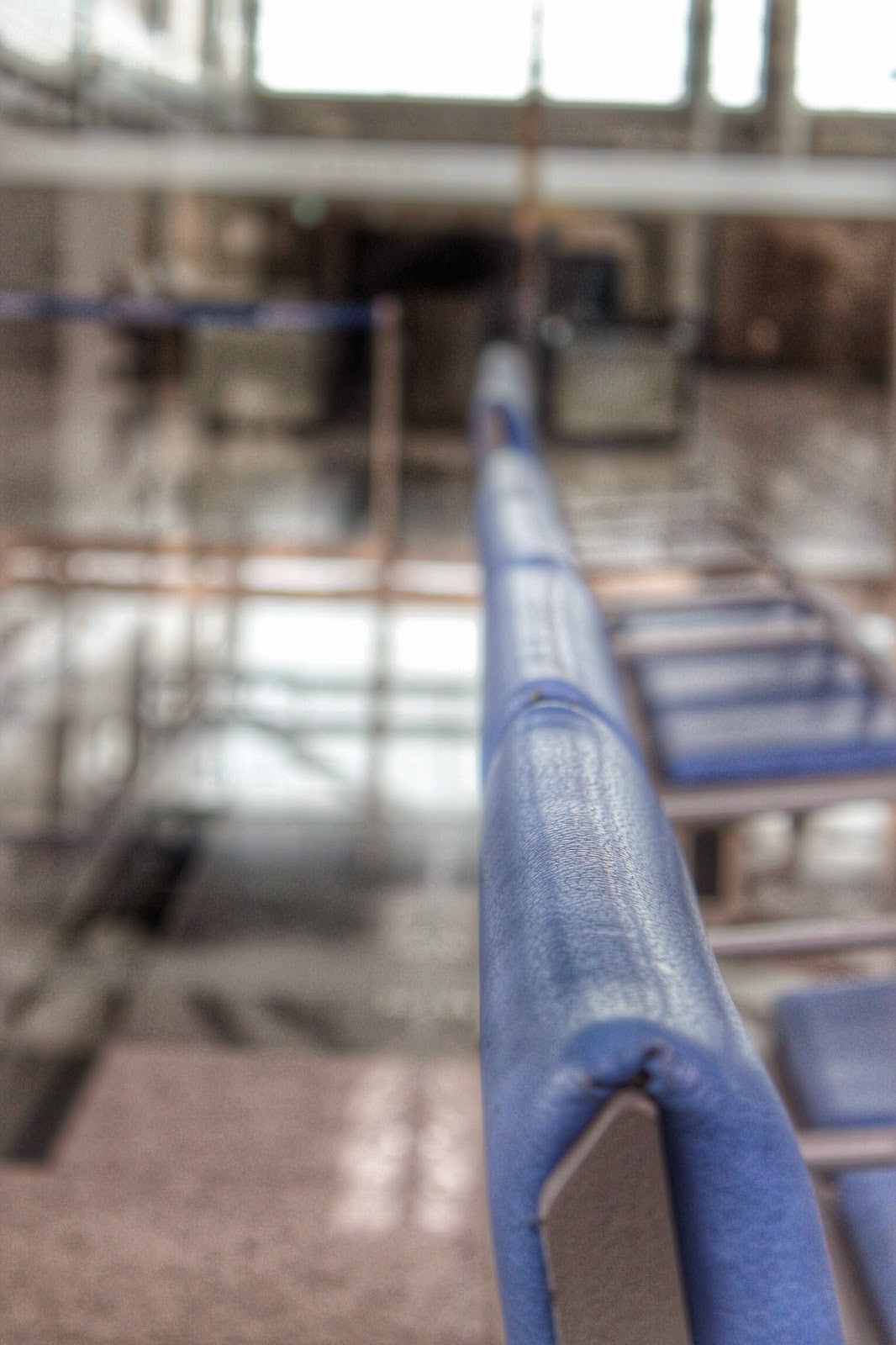The next stop was the Observation Tower. We were led into a big room with stadium seating and windows from floor to ceiling so we could look at our first views of North Korea. A short movie was played that pointed out the main things we could see.
The line between the North and the South is very clear because the North has cleared out all of the trees so they can see everything. The video told us the mountains we could see are hallowed out, ready to be used as bunkers during a nuclear attack.
A huge tower stops all GPS signals so no cell phones worked and the North Koreans can’t receive any transmissions from the south.
Once the video was over, we were able to go out to the observation deck to get a better look. There were binoculars to look through, but no pictures allowed past a line on the ground.
From the tower we could see Kaesong, the third largest city in North Korea. With the binoculars I could see a few people walking around but it was basically empty.
To the left is the Propaganda Village, or as it’s known in North Korea, Peace Village. The North Korean government says the village houses 200 families, schools, and even a hospital. Now, with modern telescopes, it is clear that the buildings are only shells, kind of like the fake buildings in Disney World. Most don’t even have window glass or rooms and automatically have lights turned on and off and certain times throughout the day. They still sweep the sidewalks to make the village look active in hopes of South Korean defection.
The flagpole in Propaganda Village is what sticks out the most. The South Korean government built a flagpole with their flag on their side of the DMZ so the North built a taller one on their side. This seemed to be a pattern with a few things, the south building something, then the North making one even bigger, and back and forth they go. The flagpole on the north is the third tallest in the world.
In the past, loudspeakers on the flagpole and buildings north of the border would deliver propaganda broadcasts aimed at the south. The broadcasts would speak about the values of North Korea and urge soldiers and farmers to cross the border to the north and be treated like brothers. Obviously, this didn’t work too well, so the broadcasts switched to anti-Western speeches until both sides agreed to stop.
We could also see the Kaesong Industrial Region, where the north and south work together. South Korean companies are able to get cheap North Korean labor (the cheapest in the world). All wages are paid to the North Korean government. There are mostly North Koreans working here, but some South Koreans as well. A convenience store is located in the complex, but only South Koreans are allowed to enter and buy anything from it. Last year, there was some conflict here, the north not allowing southerners to enter the factory, and then also keeping the northerners out of the factory. We could also see the road for trade between the north and south and, of course, a huge gold statue of Kim Jong-un (while the majority of the citizens are starving).
There were a lot of South Korean soldiers at the observation tower. They were nice and friendly, happy to smile and wave, but made sure no one took pictures past the line. The main theme on the South side of the DMZ was peaceful reunification. Many people believe they're close to coming to an agreement, but currently the north has some ridiculous demands.
 |
| A Temple at the Observation Deck |
 |
| Buddha and Barbed Wire |
The next stop was the Dorian Train Station, which was built to connect South Korea all the way to Europe.
At the time, the South Korean government paid to build the railway, even the tracks on the north. This was a huge step towards reunification but it was only open for a year because of the election of a new South Korean president and a switch to a more conservative government.
Now, it’s very quiet and eerie; a brand new train station, similar to one in Europe, basically empty.
This post was way too long to send in one email so here's DMZ and JSA Part 3




















No comments:
Post a Comment